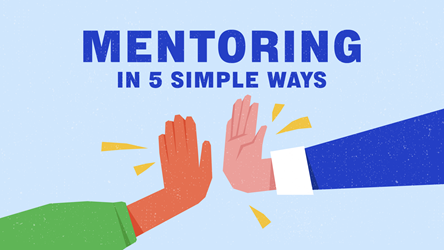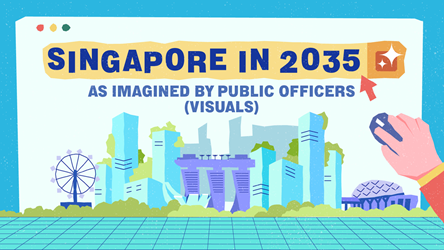Tips To Simplify Services For Customers
.jpg)
I remember visiting the Ministry of Manpower (MOM) six years ago to apply for employment and dependent passes. Jet-lagged after a long flight and with restless young children in tow, I was not very motivated to go. But when we arrived, a friendly service staff led us to an inviting family corner. The entire process was straightforward and pleasant, and took only a short time to complete. I wouldn’t have needed to promise my children ice cream for behaving themselves if I had known beforehand!
When a public service is well designed, it can delight people and improve their lives, as the MOM experience did for me.
What about the financial services sector? Perhaps the industry is overly complicated. Think about the way financial products are structured, how information is communicated and the design of websites, brochures or apps.
Bankers may argue that complexity is a necessity in the industry, as constructing financial products requires careful considerations of business risks and profitability. However, complexity created by the industry experts can deter people from making confident decisions about their finances.
Achieving simplicity is also rewarding. As an example, our digital investment tools are easy to use and provide only relevant content and alerts. This helps to simplify and streamline decision-making processes, and have led to double-digit increases in our financial product sales. As a bonus, the redesigned tools also won the Singapore Good Design Mark 2016.
Achieving simplicity sustainably
Simplicity is a capability that can be cultivated in any organisation. To do that, we must build a strong foundation by training people to have the right mindset and skills.
After the basic skills are taught, everyone can make a meaningful contribution. To use an analogy, you don’t need to be a world-class chef to cook a delicious and nourishing meal; all you need is to master the cooking basics. Here are a few basics learned along my simplicity journey.
1. Focus on fewer things. And do them well.
Make a habit of asking yourself: What is the most important thing we need to achieve? Then relentlessly focus on it.
We tend to do too many things at one go. For example, our mobile banking app used to be feature-rich. The first page showed a long list of options, including buying gadgets! However, we observed our customers using only a handful of tasks. Based on their behaviour, we prioritised the functions, ruthlessly slashed features, and made the important tasks as seamless as possible.
2. Prototype and test
Prototyping is a method designers use to visualise their ideas in a tangible form. It is also a useful problem-solving tool in the business context.
Take a submission form. To create a new form or fix an old one, we can prototype ideas by writing text and sketching entry fields — on paper. It need not look polished at this stage. The purpose is to visualise ideas quickly and test them with customers. After getting feedback, we can then quickly revise the draft and test again.
And there’s no need to test with many people. Research has shown that testing with six to eight people will reveal about 80% of usability problems. Only through prototyping and testing do the layers of difficulty strip off. Unfortunately, there is no short cut to achieving simplicity. Iterate at least three times through prototyping and testing.
3. Speak “human”
Have you ever wondered why letters from a bank or insurance company sound robotic? The letters are probably written in that tone because it has always been done that way in the past. But gone are the days when big words or complicated sentences demonstrate the author’s expertise or authority.
Instead, make your writing so simple that even an 11-year-old will understand what you say. Why an 11-year-old? According to the Flesch-Kincaid readability score method, the higher the score, the easier the writing is to understand. A score of 90-100 is given when it is easily understood by an average 11-year-old student, and 60-70 if it is easily understood by students 13-15 years old. The method was developed by Rudolf Flesch who holds a PhD in English and has championed the use of plain English.
Break long sentences into shorter sentences. Consciously choose everyday words. When writing for customers, my favourite tactic is to use “you” to refer to the reader, and “we” to refer to the company.
It is everyone’s job to make things simple. Be a simplicity chef, and you can improve people’s lives.
Ms Jin Kang is Vice President, Group Customer Experience, at OCBC Bank. Find her on Twitter at @jinzwicky and read more of her writings.
- POSTED ON
Jul 7, 2016
- TEXT BY
Jin Kang
-
Big Idea
Create Websites That Work








